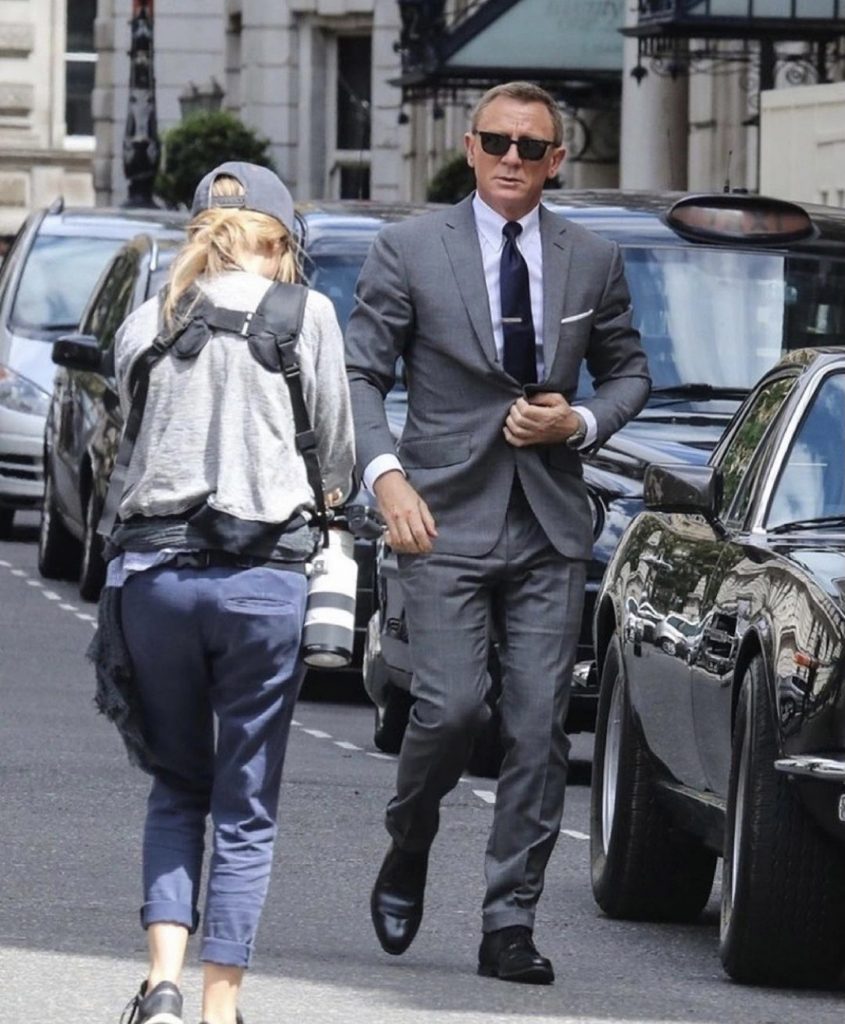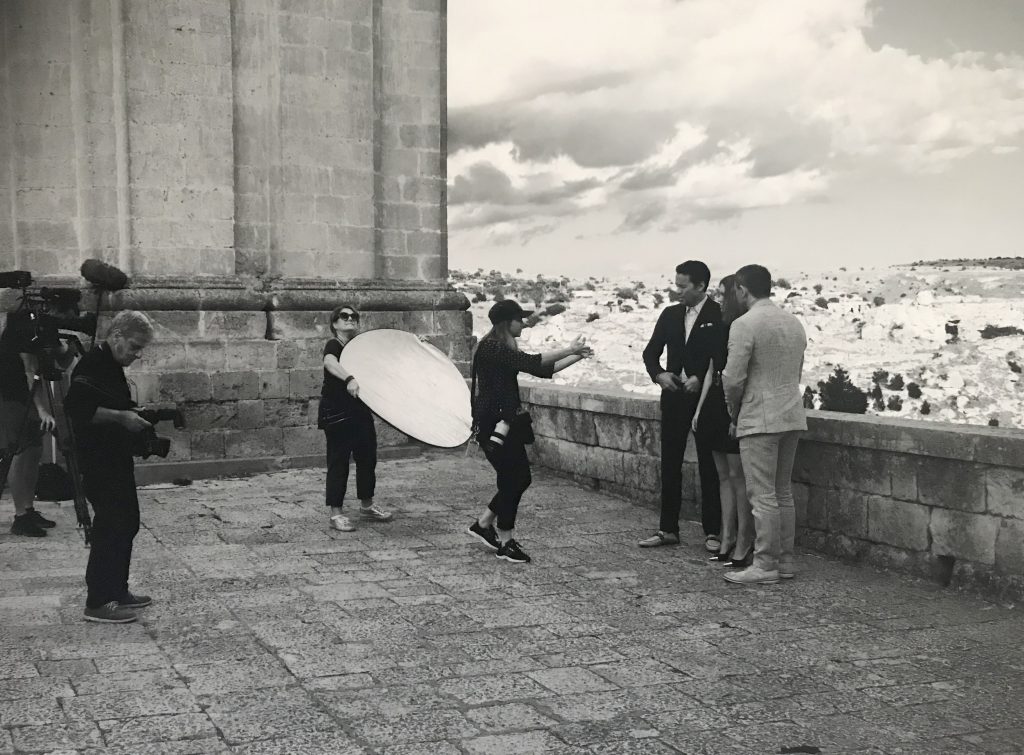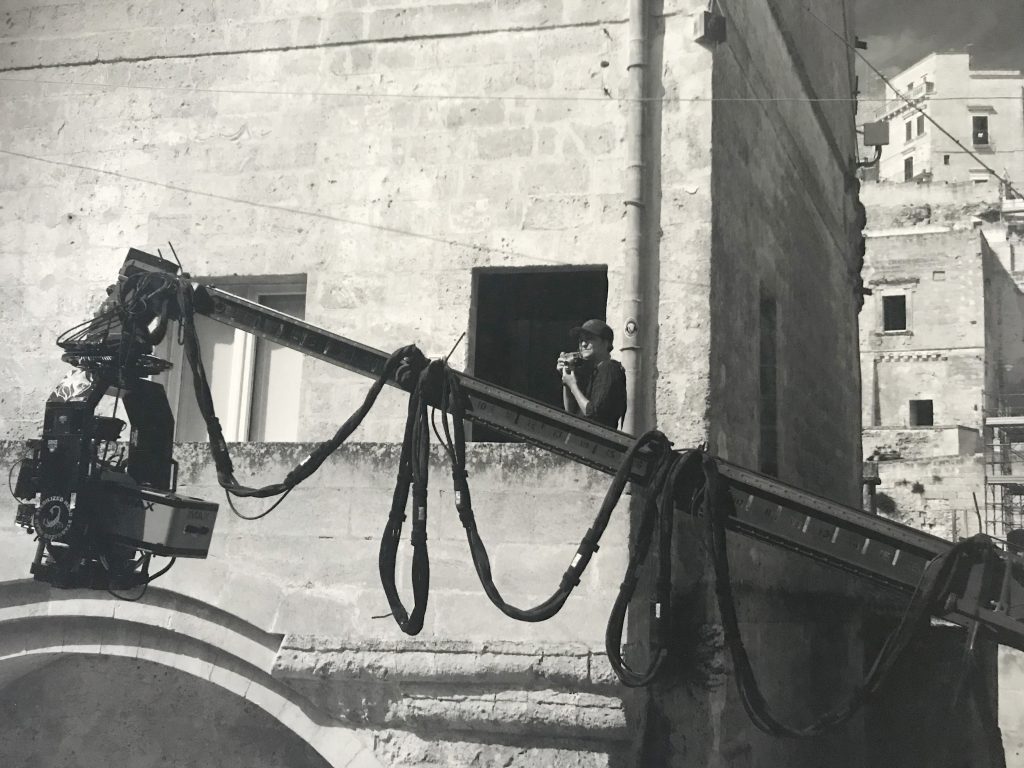7 Things I learnt from 7 months filming on a 007 film: Notes from the No Time To Die unit film stills photographer
1. Good ear protection is a necessity.
Obviously on a Bond film there will be explosions and guns, and even without them being loaded they are still extremely loud. I used two layers – one ear plug that you squeeze and it reforms in your ear canal, plus proper ear muffs which are often provided on set when there are loud weapons during a scene. I only have one ear that works, so I really have to look after it.
2. Scottish Highland ticks are to be avoided at all costs.
Sometimes as a stills photographer you need to lie on the ground to get the best angle, or to stay out of a shot. Well, in the Highlands of Scotland you run the risk of a tick latching on and crawling under your clothing, with the very real prospect of subsequently catching Lyme disease. So, as a precaution, I made sure to wear over-trousers, then gaters, which are lower leg covering that hikers often use, over top. Plus I wore everything tucked in, plus a jacket, gloves and a scarf. Then if you add in a mosquito netting headwear you look like you are ready for some kind of battle. Which you are, it’s just a battle with very small creatures that can really mess up your day. It’s kind of hilarious. Unfortunately (luckily) I didn’t manage to get any shots of me in all that get up sorry!
3. The best moments are often the small ones
Even on big action films, the best moments for images are often the small ones. The drama often lies in a look, a gesture, less than an explosion or a car crash. Not that shooting those big moments isn’t fun, it really is, but there is nothing like getting an actor’s expressions and gestures up close.
4. Cooperation is key on a film set
Many of the Bond crew have worked on a number of 007 movies over the years (Chris Corbould, the special effects supervisor, has done 11 Bond films!) and they are at the top of their game. They know not to get rattled, to work together, to create space for each other. As a photographer on set you have to balance not getting in the way with making sure you get great images of the action, over which you have very little control. It’s about knowing where to be when, and when to make yourself scarce. It’s challenging but ultimately so rewarding to nail an image that helps sell the film.
5. You need to pace yourself
The NO TIME TO DIE shoot was seven months long. It’s like a marathon so you need to make sure you eat well and get enough sleep. So if you start out by tucking into all the treats at the craft table, and big helpings of dessert, every day, you may regret it. I don’t drink coffee, despite loving it, as it gives me the shakes which is exactly not what you want as a photographer trying to hold a camera still. So I rely on proper nutrition to last the long days. That means laying off the sugar and sticking to lots of healthy snacks. It’s really boring but I was grateful during the last few weeks when most of the crew were suffering with colds and I was totally fine. It really pays off.
6.Daniel Craig has a sensitive side underneath that Bond exterior
Daniel Craig is a big softie underneath that Bond exterior. His emotion broke through as he spoke to the assembled crew after the last take on the last night of filming No Time To Die – you can see this for yourself on the behind the scenes documentary Being James Bond on Apple TV. He is very loyal to the people around him – his security, trainer, and hair and makeup teams have been with him for years. They adore him, which says alot about a film star. I had actually worked with him about 15 years before, on a film called Enduring Love, and he hadn’t changed at all since being Bond – still a friendly ultra professional actor who gets on with the crew very well.
7. Equipment Matters, but it’s not about quantity but quality
That you don’t need a truck load of photography gear to shoot a Bond film. I have two bodies and two lenses, plus a backup set of Nikon DSLR. That’s it. I concentrate on using the gear I have really well, being in the right place at the right time, and getting those simple compositions that convey a story and a moment. I hope that is both reassuring and inspiring for those of you starting out.
Happy shooting!
Nicola



